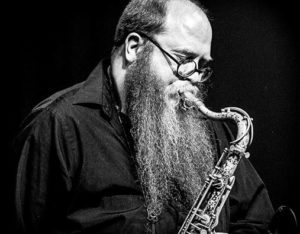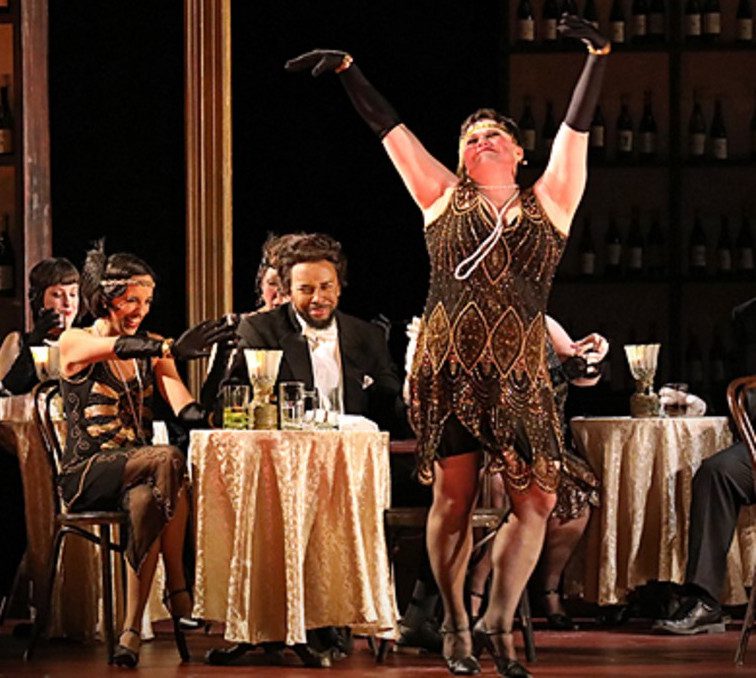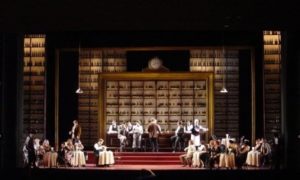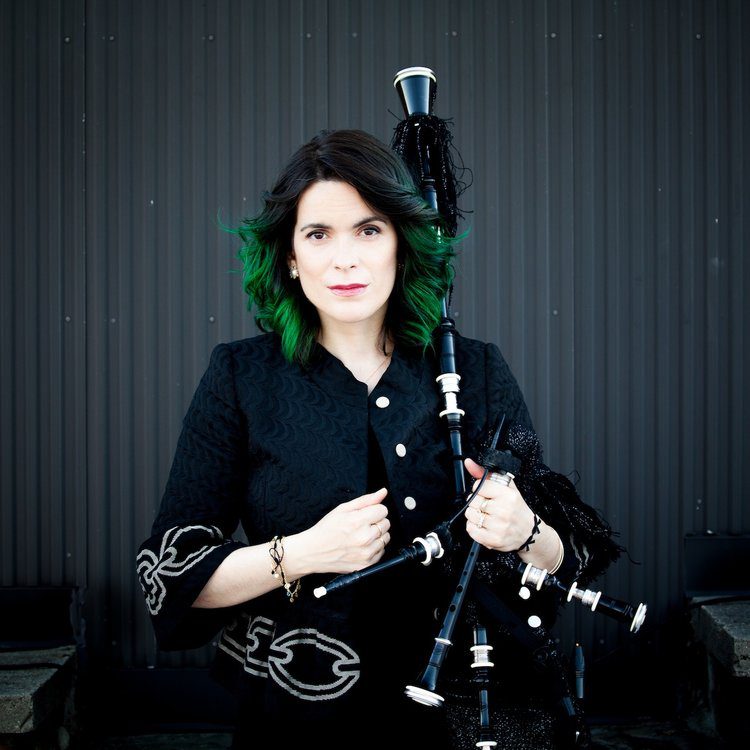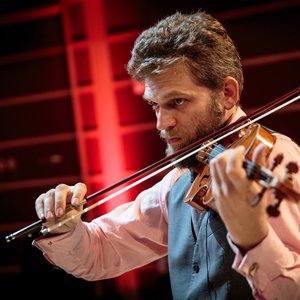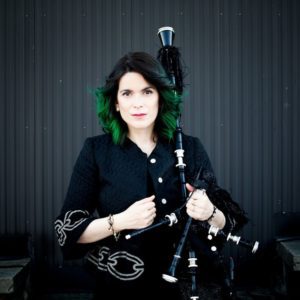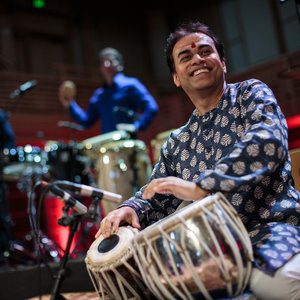Spectrum: An Eclectic Collaboration at Oz

On May 18 and 19, Nashville’s contemporary music ensemble Intersection collaborated with the choral ensemble Nashville in Harmony to present a concert titled Spectrum at
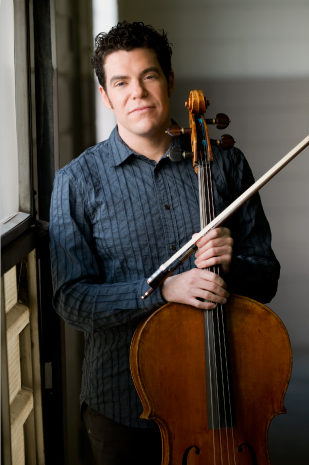
OZ arts in Nashville. The evening consisted of a rather eclectic collection of pieces culminating with a performance of Those Moments, a special commission from T.J. Cole for a work for choir and mixed chamber ensemble with pre-recorded audio.
The concert began with Nashville in Harmony performing “Until All of Us are Free” and “Why We Sing,” two moving, and culturally conscious selections performed in a dynamically nuanced and expressive manner led with enthusiasm by director Don Schlosser. These are accessible pieces that perfectly fulfill the choir’s mission to “build community and create social change.” In the second number former members were invited to join the choir as they performed a chilling rendition of that anthem.
Next, as the choir exited the stage, the musicians from Intersection entered to perform Esa-Pekka Salonen’s Mania (2000). Mania is a kind of virtuosic vehicle for cello, written for Finnish cello virtuoso Anssi Karttunen, that seems to merge the constant repetition of minimalism with an equally constant and continuous developing variation as the solo
cello fades in and out of a rich and dense accompanying framework. Salonen describes the work as:
I wanted to compose music, which consists of a number of relatively simple gestures or archetypes, which are constantly evolving and changing; not so much through traditional variation techniques, but trough a kind of metamorphosis. A maggot becomes a cocoon, which becomes a butterfly: very different gestalts indeed, but the DNA is the same.
Intersection’s Michael Samis proved himself up to the task with a brisk articulation of Salonen’s rushing gestures, all without losing clarity or feel. Maestra Corcoran admirably maintained a precise balance in the ensemble in a composition that requires sheer virtuosity from nearly every one of its members. At the pause before the applause one could hear the audience join the musicians in catching their breath.
Before intermission Nashville in Harmony returned to the stage to perform three more songs, Christopher Tin’s “Sogno di Volare,” Annie Lennox’s “1000 Beautiful Things,” and Taylor and Dallas’s “I Wish I Knew How It Would Feel to Be Free.” Of the three, Tin’s “Sogno di Volare” (The Dream of Flight) was the most interesting. A theme from the video game, Sid Meier’s Civilization VI, Tin’s choral anthem is a setting of a modernization of Leonardo da Vinci’s writings on flight in which the composer hoped to “capture the essence of exploration; both the physical exploration of seeking new lands, but also the mental exploration of expanding the frontiers of science and philosophy.” The soloists for Lennox’s “1000 Beautiful Things,” Grace Wegener, Paige Pennigar, and Lia Van de Krol were remarkable in their articulation and timbral color, each adding a subtle interpretation from within the color of their individual voices that, on the one hand, emphasized their separate indentities but on teh other, blended quite well within the broader group–a perfect metaphor for Nashville in Harmony’s aesthetic (and political) goals.

After intermission Intersection returned to the stage to perform Liza Lim’s Voodoo Child (1989). Lim’s work is also a vehicle for virtuosity, but not of the traditional sort of virtuosity heard in Salonen’s piece. Lim’s work features extended techniques such as guttural song from the soprano, bi-phonics (two pitches at once) from the clarinet and other non-traditional sounds to create clouds of sound that tended to clash in their expression of the extreme emotive sentiments as drawn from Sappho’s poem To a Young Girl. The result is a kind of synthesis of the sound palates of Edgard Varese and the intense primal expressions of George Crumb. For me this was the most interesting performance of the night. Each instrument displayed extended techniques that reached beyond its expectations even as other gestures seemed to be remarkably idiomatic to each instrument. Special mention for this goes particularly to Alejandro Acierto (clarinet) and Kristen Holritz (flute). Particularly stunning was Rebekah Alexander’s
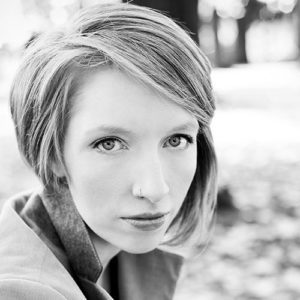
(soprano) performance. Alexander, through her performances with Chatterbird and now Intersection, is developing a strong reputation for bringing the highest musicality to the most difficult contemporary repertoire for voice. Here she sang with a bracing charisma and personality that moved the audience to the edge of their seats. One hopes we might someday get the opportunity to hear her interpret Arnold Schoenberg’s Pierrot Lunaire or even Ligeti’s Mysteries of the Macabre.
Finally, the evening ended with the commission, Cole’s Those Moments (2019) performed by both ensembles together. As stated in the program, “Cole’s work draws inspiration from personal stories gathered by the local LGBTQ+ community and explores the gender spectrum through visual art and projections integrated with musical creation.” The result is a six-movement choral work which employs the prerecorded and edited voices of various choral members, speaking on the role gender has played in their individual lives, as an introduction to each movement. The chorus’s function is very much akin to that of a Greek chorus, providing a moral, interpretive commentary on what is heard in the recording that introduces the movement. Here Cole showed a real talent for antiphonal and stirring, even Handelian, imitative contrapuntal writing. But the sound was extended by the composer through the addition of the sounds of the choir murmuring and chattering, creating a spectrum of voices. The most moving moment of the work in my opinion was at the great reprise of the opening line “Can you hear my voice? Let me have my harmony,” which is revamped into a refrain of the final movement:
I remember / Hear my voice / Hear my harmony
And at the final cadence the audience rose to its feet. In a remarkably eclectic night filled with fantastic choral singing and the most cutting-edge avant-garde music, perhaps the best measure of success resided in the fact that when the lights came up, we all felt as though we were part of the same community—a tremendous accomplishment in these times.
CD Review
Jonathan Leshnoff: Symphony No. 4 “Heichalos”, Guitar Concerto, and Starburst by The Nashville Symphony Orchestra

This 2019 live recording release from Naxos presents Leshnoff’s Symphony No. 4 commissioned for the Nashville Symphony’s Violins of Hope project. The Violins of Hope are a collection of stringed instruments that were played by Jewish musicians during the Holocaust and have been restored and recorded on this album. The 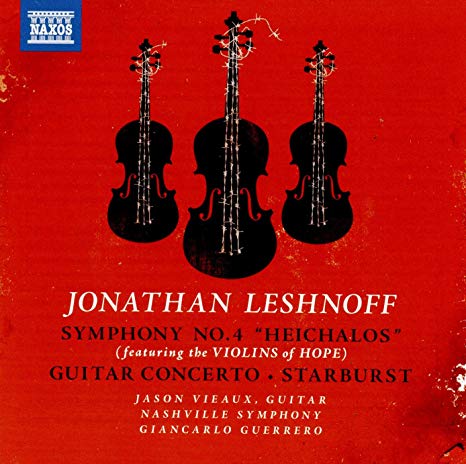 composer believes his symphony represents a parallel to the Violins of Hope as an embodiment of Jewish survival. While the violins are a physical embodiment, Leshnoff’s music provides a more spiritual one. The subtitle, “Heichalos,” refers to an ancient text describing a way to achieve a divine communion through meditating oneself through “rooms” of deeper consciousness. In just two parts rather than traditional symphonic movements, Leshnoff intends for listeners to experience the musical depiction of each of these rooms. Bold chords set the tone for the beginning of Part I and the brass section is featured in the opening passages of thick orchestration. Although a dark overall mood is achieved, harp and woodwind help provide an ethereal characteristic to the heaviness of Part I shortly before a climactic ending.
composer believes his symphony represents a parallel to the Violins of Hope as an embodiment of Jewish survival. While the violins are a physical embodiment, Leshnoff’s music provides a more spiritual one. The subtitle, “Heichalos,” refers to an ancient text describing a way to achieve a divine communion through meditating oneself through “rooms” of deeper consciousness. In just two parts rather than traditional symphonic movements, Leshnoff intends for listeners to experience the musical depiction of each of these rooms. Bold chords set the tone for the beginning of Part I and the brass section is featured in the opening passages of thick orchestration. Although a dark overall mood is achieved, harp and woodwind help provide an ethereal characteristic to the heaviness of Part I shortly before a climactic ending.
The Violins of Hope feature in the contrasting Part II with long, lightly woven lines that Leshnoff gently incorporates with brass foundations and flute contributions. A sense of seriousness pervades the entire symphony and there is no doubt the musicians were committed to performing with sincerity, especially those using instruments from the collection. In the music score, the composer has inserted a question before Part II begins: “Who do you love?” and at the end, “Where are they now?” The reflective interpretation of the Nashville Symphony is made permanent on this recording, one that conductor Giancarlo Guerrero says the musicians are so honored to make.
Also on this album is renowned guitarist Jason Vieaux performing live Jonathan Leshnoff’s Guitar Concerto. The vibrant, three movement work proves no easy task for the

performer but Vieaux’s clarity is exceptional considering Leshnoff has written many bright runs in the upper register and descending arpeggio passages. The first movement is a fine movement to represent a modern guitar concerto while the Adagio and Finale movements implement the tried and true styles of guitar and orchestra writing. The Finale is definitely lively and full of dance-like spirit. Overall the orchestration is well-done and makes the concerto a decent addition to the repertoire.
Starburst is an eight minute, compact orchestral piece as exciting and stunning as its name. The strings race away from the start with rhythmic ferocity, punctuated by the timpani. At a climactic chord in the middle, every instrument falls away except the clarinet. It is left to float a long melody over the space that is suddenly created. Leshnoff says this moment in Starburst is one of his favorite places in his own music. A popular opening piece, the recording of Starburst by Nashville Symphony Orchestra will be the reference for future performances.
This stamp of ownership is something Guerrero is proud of and notes that the live recording of all three pieces benefited from the composer getting to work closely with the orchestra in many stages of rehearsals. The Nashville Symphony has established itself as a reliable group for producing quality classical recordings and that will make a lot of patrons in Music City very happy.
Nashville Opera’s The Cradle Will Rock: an Anthem for All of Us
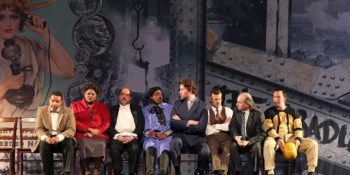
Marc Blitzstein’s The Cradle Will Rock is an ode to the working class, consisting of bountiful hot-button social commentary and dashes of sly barbs to boot. The work takes place in “Steeltown, USA,” and follows union organizer Larry Foreman’s efforts to unite the workers of the town and to fight back against the all-powerful Mr. Mister, who is in control of every part of town life. No, this isn’t a politically incorrect off-Broadway production that premiered last year, but a 1930’s play in music that was famously shut down before it could even take the stage. And, strikingly, Nashville Opera’s production utilizes a combination of authentic acting, minimalistic set design, and stellar producing in a way that (combined with contemporary events) makes Blitzstein’s work just as relevant now as it was when he wrote it.
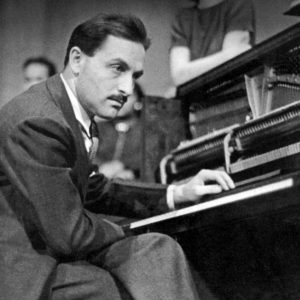
Cradle originally came about from the Federal Theater Project under the post-great depression Works Progress Administration – a seemingly forgotten time when the government deemed it important to fund many art programs during an economic downturn. Because of this context, it is important to note the situation in which the work “premiered,” as Nashville’s rendition pays courtesy to this touchy beginning.
The night that Cradle was to be performed, the theater abruptly shut down due to “budget constraints” – or perhaps due to the opera’s pro-union message. Moving to another theater twenty blocks north of downtown Manhattan, the performers had to sing from the audience to obey theater policies and Blitzstein had to scrap his orchestra ensemble and hastily play instead on a dingy upright piano. As such, it is notable that John Hoomes, Nashville Opera’s artistic director, chose to keep this sparse instrumentation and characteristically spare set design. Amy Tate Williams nails it on the jazzy piano accompaniment that blends effortlessly with the performers, and kudos to the surprisingly large, Nashville-based cast for their gripping acting which more-or-less pays homage to the actors and actresses that made the premiere possible.
While it takes the minimum to get this work right, it can be quite easy to get it wrong. Fortunately, the raw emotion from Nashville’s cast is one that draws the audience in and makes Cradle a success – switching from the court trial in night jail, to each character’s interesting backstory, the over-arching narrative is captivating despite its simplistic nature and less than stellar musical numbers. What makes it bearable, and sometimes beautiful, is the score, where spoof passages that taunt

the bad guys alternate with pointed, yearning arias that distinguish the others. (If it sounds like Leonard Bernstein, that’s because Bernstein was a Blitzstein protégé.) In both modes, the music is more expressive than the lyrics, which seem to have been written for a pamphlet.
Most of the story progresses as a merry-go-round of bribery and corruption. Before the audience can be awed by the riveting soliloquy of the union organizer Larry Foreman (Eric Pasto-Crosby), we have the anti-union Liberty Committee to indulge us. Led by Galen Fott as Mr. Mister, the cronies, all of whom bring a different air to their roles, are presented in vignettes of sorts while being blackmailed into agreement. All the while there is the bona fide Reverend Salvation (Brett Hetherington) who tailors his sermons to match the political imperatives of the time, while Editor Daily (Patrick Thomas), who’s “made to order” news (most of it fake), alters the rest of Steeltown’s thoughts over the course of the work.
There’s also the progression of the lap dog artists, Dauber (Darius Thomas) and Yasha (Scott Rice). Truly one of the most comical scenes, they cozy up to the coy Mrs. Mister (Martha Wilkinson). Through her vivid charm and flirtatious acting, she is able to lure the two once again into this promise of a financial safety net – as long as they join her and her husband in opposing the union. While the scene is innocent from the outset and perfectly executed by the actors, it is unnerving nonetheless as a situation that is still so prevalent in the arts today.
The performance’s best moments, though, is its honesty and moments which contain a hint of a kind of winking, motley spirit, as when Luke Harnish — who’s fun to watch throughout — executes a silly ballet as a macho football coach. Megan Murphy Chambers has a strong voice and a sharp, light appeal as Moll, though she must spend most of the play sitting and listening. Brooke Leigh Davis sounds full and resonant as Ella Hammer, who brings the show to what should be its emotional climax with “Joe Worker,” a memorandum of suffering anger in the face of oppression by the bosses.
While the work is more about meaning than musical richness, the story ends with a finale that brings all that came before it into one big anthem, exclaiming
“there’s a storm that’s going to last until
The final wind blows, and when the wind blows
The cradle” [that would be the cozy, lofty enclave of the one percent] “will rock!”
This is the first time the audience witnesses the full chorus, and the cast appropriately fills the hall of Noah Liff Opera Center with a heartening send-off.
Both an attack on wealth and the corruption it can bring, as well as a paean to labor and poor people struggling to get by, the political message of Cradle is just as relevant now as it was then, and its continued revival speaks to its potential to reflect on contemporary society. Nashville Opera brought all of this into focus by staying true to their motto: “Sing Bravely.” And while the conflicts between freedom and security, corruption and innocence, and power and integrity may have changed their manifestations since the 1930s, they still exist today and the continuing impact of The Cradle Will Rock can be found in its ability to speak plainly to these issues through music.
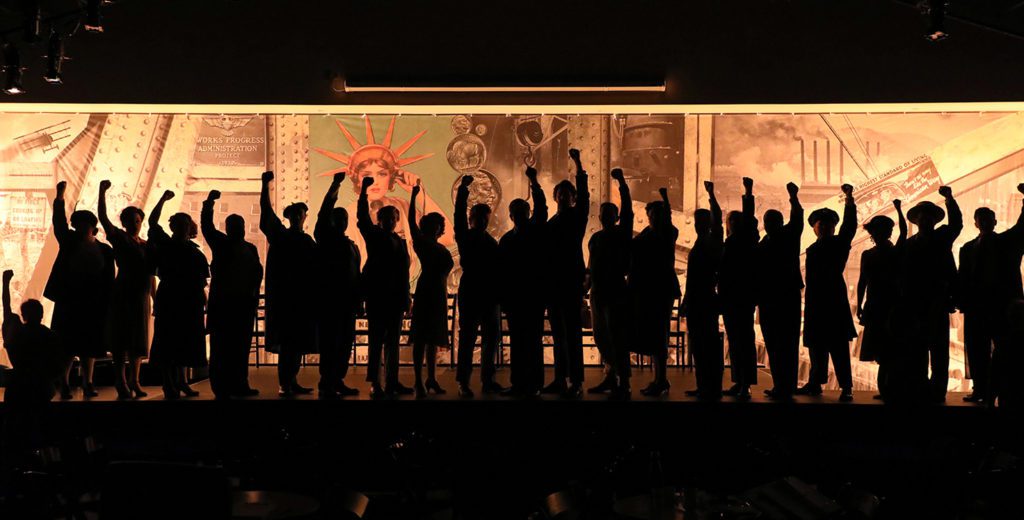
Spano and Trpčeski with the Nashville Symphony
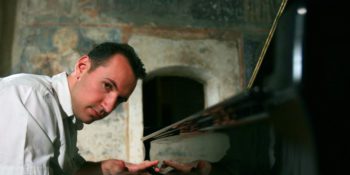
On the first weekend in May the Nashville Symphony gave a concert featuring Michael Gandolfi’s The Garden of the Senses Suites, Jean Sibelius’s Symphony No. 5 in E-Flat Major, Op. 82 and Sergei Rachmaninoff’s epic Concerto No. 3 in D Minor for Piano and Orchestra with Simon Trpčeski on piano and Robert Spano at the podium. The evening was mixed, but ended wonderfully.
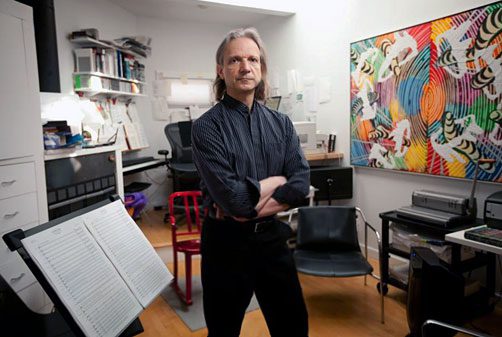
The concert opened with Gandolfi’s Suite. Written on a commission by guest conductor Robert Spano, the piece is one of a series titled the Garden of Cosmic Speculation and was inspired by Charles Alexander Jencks’s Garden of Cosmic Speculation, and actual garden outside Dumfries, Scotland which, “celebrates nature and his [Jencks’s] own fascination with advances in cosmology, genetics, chaos theory, fractals and other areas of contemporary science.” One of thirteen movements in the composition, the suite is organized along the lines of one of Johann Sebastian Bach’s suites with each movement corresponding to a dance movement. Further, each movement is meant to also correspond in a synesthetic gesture to one of the other senses: Allemande (Audition), Courante (olfaction), Sarabande (gustation), Passepied (palpation), Gigue (vision), and Chorale (the sixth sense: intuition).
Obviously, there is an awful lot going on here to digest in one hearing, but ignoring all of this and just paying attention to Spano’s realization of Gandoli’s genius for style and instrumentation was quite rewarding. The waves of chromaticism in the dignified first movement, and the sparkling pizzicato strings in the Passepied were remarkable. My favorite was the last movement, a setting of Bach’s chorale “O wie selig seid ihr doch, ihr Frommen” set in a rhythmic and registrational self-reflexive commentary in which, as Gandolfi described it, the “…music anticipates or in
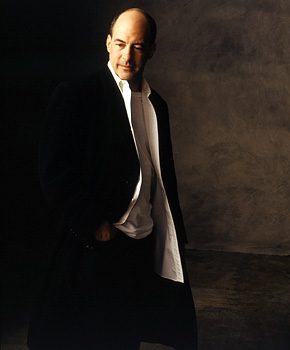
tuits itself.” Spano’s interpretation showed his knowledge of the piece and his talent for interpreting contemporary American music.
Maestro Spano is a world-class conductor and has done amazing things with the Atlanta Symphony in his two-decade tenure there. After winning six Grammys and surviving a dreadful lockout in 2014, he has certainly earned the esteem he
has garnered and when he begins his new position in Fort Worth in 2021 there is a lot of appropriate optimism. However, his approach with the baton is remarkably different from our own Maestro Guerrero, a difference that might be exaggerated in comparing the reserve of Richard Strauss to the vigor of Georg Solti, and this difference came through in the Sibelius.
Jean Sibelius began work on his Fifth Symphony in 1915 and it underwent a number of revisions before achieving its final form in 1919. It features a highly developed organicism that rests on the slow emergence and dénouement of the famous “swan theme” in the primary climax of final movement, presented by the horns. The piece as often been described as “regressive” from a formal and harmonic point of view, but this accessibility can conceal a remarkably intuitive formal organization. On Friday there were marvelous moments, in the Andante in particular where Nashville’s woodwinds deserve special mention, but the grand sweep of Sibelius’s piece felt off balance, the famous final chords more perfunctory than transcendent.
The epic work depicted in the movie Shine, a docudrama of child prodigy David Helfgott’s troubled career, Rachmaninoff’s Third Concerto is often described as the most difficult piece in the concert repertoire of the piano. However, after intermission when Simon Trpčeski breezily strolled on stage to present it, his confidence was infectious. Beginning the
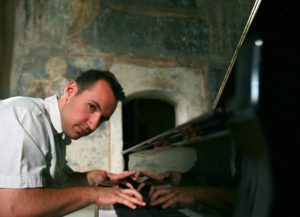
famous first theme with a marvelous singing tone and constantly attentive to Spano and the orchestra, by the arrival of the second theme, Trpčeski seemed to bring orchestra, conductor and himself into alignment for an extraordinary and explosive performance.
He took to the powerful cadenza, playing the earlier and longer version, with a certain joy, stretching his legs out beneath the piano as the entire stage seemed to move as one. The intermezzo and final movement were equally great to the first, with the maze of themes in Rachmaninoff’s final movement articulated as though it was a walk through an (astoundingly) beautiful park. At the final cadence the audience leapt to its feet and would not calm until treated to an encore—which Trpčeski obliged. (I hear he did on Saturday too). The Classical Series continues on May 17th with Thibaudet Plays Turangalîla, a rarely heard masterpiece by Olivier Messiaen featuring the otherworldly, electronic ondes-Martenot.


 and vitality that is graceful, visceral, and everything in between.
and vitality that is graceful, visceral, and everything in between.
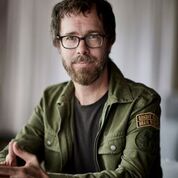
 Above all, Ben Folds with Nashville Ballet created a unique environment that can be quite rare in performance. It created a space of complete harmony between music and dance; where the two elements could be appreciated in full as one entity and neither vied for dominance over the other. Instrumental soloists were just as visible as the dancers for which they played. Music and choreography both seemed to be produced from a place that is as much source as it is response. Three out of the four programmed pieces were composed with the full intention of their performance in a concert hall without any staging at all, but were choreographed and performed with such a high degree of care and finesse that one almost could not imagine them without their choreography. In the same way, the one programmed piece that was composed exclusively with choreography in mind would hold wonderfully in a concert hall, stripped of its visual elements. The effect is one of actual awe where the audience can feel every caress and every impact in full, with absolute clarity.
Above all, Ben Folds with Nashville Ballet created a unique environment that can be quite rare in performance. It created a space of complete harmony between music and dance; where the two elements could be appreciated in full as one entity and neither vied for dominance over the other. Instrumental soloists were just as visible as the dancers for which they played. Music and choreography both seemed to be produced from a place that is as much source as it is response. Three out of the four programmed pieces were composed with the full intention of their performance in a concert hall without any staging at all, but were choreographed and performed with such a high degree of care and finesse that one almost could not imagine them without their choreography. In the same way, the one programmed piece that was composed exclusively with choreography in mind would hold wonderfully in a concert hall, stripped of its visual elements. The effect is one of actual awe where the audience can feel every caress and every impact in full, with absolute clarity.

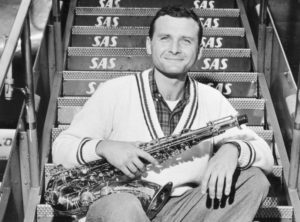
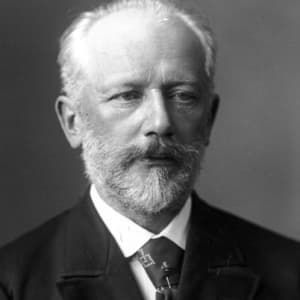
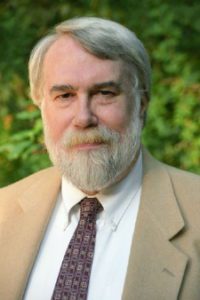
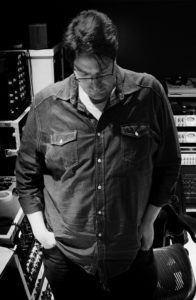 I arrived at Rudy’s just in time to catch the back end of the Jody Nardone trio’s set. Nardone is a fine pianist and tremendous vocalist. The ensemble covered Soundgarden’s Black Hole Sun, with an innovative approach that seemed to replace the grunge rock anthem’s volume and distortion with advanced harmonies and introspection. A fusion that made the song anew even as it carried the same expressive goals with gripping precision. After the set, Nardone gave me a copy of his 2013 release Lights Will Guide You Home whose title he took from the opening ballad “Fix You” by popular rock artist Coldplay. It is littered with these beautiful covers of deep tracks in popular music.
I arrived at Rudy’s just in time to catch the back end of the Jody Nardone trio’s set. Nardone is a fine pianist and tremendous vocalist. The ensemble covered Soundgarden’s Black Hole Sun, with an innovative approach that seemed to replace the grunge rock anthem’s volume and distortion with advanced harmonies and introspection. A fusion that made the song anew even as it carried the same expressive goals with gripping precision. After the set, Nardone gave me a copy of his 2013 release Lights Will Guide You Home whose title he took from the opening ballad “Fix You” by popular rock artist Coldplay. It is littered with these beautiful covers of deep tracks in popular music.